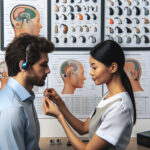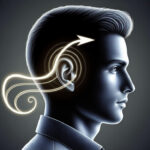This 30 Second Technique is Shockingly Effective
Beyond Ringing: The Diverse Sound of Tinnitus Explored

Understanding Tinnitus: More Than Just Ringing
What is Tinnitus? The Basics Explained
Tinnitus is a common health condition characterized by the perception of noise or ringing in the ears when no external sound is present. It's a symptom rather than a disease itself, indicating an underlying condition related to the auditory system. The experience of tinnitus varies widely among individuals, both in sound and severity. While it's often described as ringing, it can manifest as a range of sounds. It may be constant or intermittent, and it can affect one or both ears. Understanding tinnitus is the first step in addressing its challenges and finding relief.
The Sound of Tinnitus: An Overview of Variations
The sound of tinnitus is diverse. Though many people report a ringing noise, others describe their tinnitus as hissing, buzzing, whistling, swooshing, or clicking. The pitch can be high or low, and the volume can range from barely noticeable to debilitatingly loud. The sound may be present all the time, or it may come and go. These variations in the sound of tinnitus are key in diagnosing and understanding this complex condition. Each individual's experience is unique, and their description of the sound provides valuable insight into their specific type of tinnitus.
How Tinnitus is Diagnosed and Evaluated
To diagnose tinnitus, healthcare providers typically start with a detailed medical history and a physical examination of the ears. Audiological tests are conducted to assess hearing ability and the characteristics of the tinnitus sound. In some cases, additional tests such as an MRI or CT scan may be recommended to rule out structural causes. Questionnaires and scales are often used to evaluate the impact of tinnitus on a patient's quality of life. This comprehensive approach ensures that the unique nature of each individual's tinnitus is understood and appropriately addressed.
The Many Shades of Tinnitus: A Symphony of Sounds
High-Pitched Whistling: The Classic Tinnitus Tone
The classic high-pitched whistling sound is what most people associate with tinnitus. This tone can be piercing and persistent, making it one of the more intrusive forms of the condition. It's often linked to exposure to loud noises or age-related hearing loss. The high-pitched whistling can be particularly challenging to manage because it tends to stand out, especially in quieter settings. This frequency of the sound of tinnitus is not only bothersome but can also interfere with the ability to hear other sounds and engage in conversations.
The Sound of Tinnitus as Buzzing or Humming Noises
For some, the sound of tinnitus manifests as a continuous buzzing or humming noise. These sounds can resemble the noise of electrical equipment or a swarm of insects. They tend to have a lower pitch compared to the whistling tinnitus and can fluctuate in intensity throughout the day. These types of tinnitus sounds can be particularly distracting, making it difficult for sufferers to concentrate on tasks or find relaxation. Identifying the specific sound and its patterns can be instrumental in developing effective coping strategies and treatment plans.
Pulsatile Tinnitus: Rhythmic Beating or Whooshing
Pulsatile tinnitus is a type of tinnitus that is characterized by rhythmic sounds that often pulse in synchronization with the individual's heartbeat. This can manifest as a thumping, whooshing, or beating noise in the ear. Unlike other forms of tinnitus, pulsatile tinnitus is generally caused by changes in the blood flow in vessels near the ear or by abnormalities within the ear itself. It's important for individuals with pulsatile tinnitus to undergo thorough medical evaluation, as it can sometimes indicate more serious underlying conditions.
The Impact of Tinnitus Sound on Daily Life
Navigating Social Settings with Tinnitus
Having tinnitus can make social interactions quite challenging. The sound of tinnitus can mask or distort external sounds, making it difficult to follow conversations, especially in noisy environments. People with tinnitus may find themselves asking others to repeat themselves frequently or may withdraw from social situations to avoid the struggle. This can lead to feelings of isolation and frustration. However, with the right coping mechanisms and supportive friends and family, those with tinnitus can still enjoy social engagements and maintain their relationships.
The Challenge of Silence: Tinnitus in Quiet Environments
Quiet environments can paradoxically become difficult for individuals with tinnitus. In the absence of background noise, the sound of tinnitus can become more pronounced, filling the silence with unwanted noise. This can be particularly distressing during times when relaxation or concentration is desired, such as while reading, meditating, or trying to fall asleep. To combat this, many people with tinnitus find relief through the use of white noise machines or other forms of sound therapy to help mask the internal sounds and provide a sense of calm.
Coping Strategies for Managing the Sound of Tinnitus
Living with tinnitus requires the development of effective coping strategies. Mindfulness meditation, cognitive-behavioral therapy (CBT), and tinnitus retraining therapy (TRT) are some of the methods that have shown to be helpful. Additionally, hearing aids equipped with tinnitus-masking features can provide relief for those who have hearing loss in conjunction with tinnitus. Lifestyle changes such as reducing caffeine and salt intake, avoiding loud noises, and managing stress can also help to minimize the impact of tinnitus on daily life.
The Root Causes Behind the Sounds of Tinnitus
The Link Between Hearing Loss and Tinnitus Sounds
Hearing loss is one of the most common causes of tinnitus. When hearing is impaired, changes occur in the way the brain processes sound. This can result in the brain trying to compensate for the lack of external sound by creating its own noise, leading to tinnitus. The degree of hearing loss can correlate with the loudness and pitch of the tinnitus sound, and addressing the hearing loss with hearing aids or other treatments often helps in managing tinnitus symptoms as well.
Ear Infections and the Emergence of Tinnitus Tones
Ear infections can temporarily or permanently affect hearing and lead to the emergence of tinnitus tones. The inflammation and fluid buildup associated with ear infections can disrupt the normal functioning of the ear and result in various sounds of tinnitus. Typically, treating the ear infection will alleviate the tinnitus. However, if the infection causes damage to the inner ear structures, the tinnitus may persist even after the infection has resolved.
The Role of Stress in Tinnitus Symptom Variation
Stress and anxiety are known to exacerbate tinnitus symptoms. The relationship between stress and tinnitus is complex and bidirectional; tinnitus can cause stress, and stress can make the sound of tinnitus more noticeable or intrusive. Stress management techniques, including relaxation exercises, deep breathing, and physical activity, can be effective in reducing the perceived intensity of tinnitus. By managing stress, many individuals find that their tinnitus becomes less of a daily burden.
Tinnitus Sound Characteristics and Personal Experiences
Volume and Pitch: The Personal Nature of Tinnitus Sounds
The volume and pitch of tinnitus sounds are highly personal. What may be a soft, high-pitched whistle to one person could be a loud, low hum to another. These characteristics can affect how disruptive the tinnitus is and can vary based on factors such as stress levels, sleep quality, and exposure to loud noises. Understanding these individual characteristics is crucial for tailoring treatment and coping strategies to each person's experience.
The Sound of Tinnitus: Subjective Descriptions from Patients
Descriptions of the sound of tinnitus are as varied as the individuals who experience it. Some liken it to the sound of cicadas on a summer night, others to the hum of a refrigerator, and yet others to the sound of steam escaping a pressure cooker. These subjective descriptions are important in understanding how tinnitus affects daily life and emotional well-being. They provide healthcare providers with insight into the patient's experience, facilitating empathy and a more personalized approach to treatment.
How Tinnitus Sounds Can Change Over Time
The sound of tinnitus can change over time due to various factors, such as changes in hearing, health conditions, or even stress levels. Some individuals may notice that their tinnitus varies in pitch or intensity from day to day, while others may experience a gradual change over months or years. These fluctuations can affect how individuals cope with tinnitus and may require adjustments to their management strategies. Regular monitoring and communication with healthcare providers can help in adapting to changes in tinnitus sounds.
Treatments and Therapies: Addressing the Sound of Tinnitus
Sound Therapy: Masking the Sound of Tinnitus
Sound therapy is a common approach to managing the sound of tinnitus. It involves the use of external noise to help mask or distract from the internal sound. This can be achieved through specialized devices that produce white noise, nature sounds, or other ambient sounds. Sound therapy can be particularly helpful at night or during quiet times when tinnitus is more noticeable. It can provide relief and promote relaxation, making it easier to cope with the daily challenges of tinnitus.
Cognitive Behavioral Therapy to Reframe the Tinnitus Experience
Cognitive Behavioral Therapy (CBT) is a psychological treatment that helps individuals reframe their thoughts and reactions towards the sound of tinnitus. By changing negative thought patterns and behaviors, CBT aims to reduce the distress associated with tinnitus and improve quality of life. It does not eliminate the sound but can significantly alter the patient's emotional response to it, making the tinnitus less bothersome and easier to live with.
Medications and Supplements: Do They Influence Tinnitus Sound?
Currently, there are no specific medications approved to treat tinnitus. However, some medications and supplements may indirectly influence the sound of tinnitus by addressing underlying conditions or symptoms such as anxiety, depression, or insomnia. For instance, antidepressants or antianxiety medications can help manage the stress related to tinnitus, potentially reducing its perceived intensity. Supplements like ginkgo biloba have been studied for their potential benefits on tinnitus, but evidence of effectiveness is mixed and further research is needed.
The Future of Tinnitus Sound Research and Relief
New Frontiers in Tinnitus Sound Management
Research into the sound of tinnitus and its management continues to evolve. New frontiers include the development of neuromodulation techniques that aim to reset the neural circuits involved in tinnitus. Advances in the understanding of the brain's role in tinnitus perception are leading to innovative therapies designed to reduce tinnitus symptoms. As our knowledge expands, the potential for more effective and targeted treatments grows, offering hope to those affected by tinnitus.
Advances in Technology for Tinnitus Sound Therapy
Advances in technology have led to the creation of sophisticated devices and applications for tinnitus sound therapy. These include hearing aids with built-in tinnitus masking features, smartphone apps that provide personalized soundscapes, and wearable devices that deliver customized audio therapy. These technological solutions are designed to be user-friendly and easily integrated into daily life, providing accessible relief for those dealing with the sound of tinnitus.
The Role of Community and Support in Tinnitus Management
The role of community and support is invaluable in managing the sound of tinnitus. Support groups, both in-person and online, provide a platform for individuals to share their experiences and coping strategies. These communities foster a sense of belonging and understanding, offering emotional support and practical advice. The collective wisdom and encouragement found within these groups can be a powerful tool in navigating the challenges of living with tinnitus.
Conclusion: Embracing the Diversity of Tinnitus Sounds
Finding Support and Resources for Tinnitus Sound Challenges
Finding support and resources is crucial for those facing the challenges of the sound of tinnitus. Healthcare providers, audiologists, and tinnitus specialists can provide guidance on treatment options and coping strategies. Numerous organizations and websites offer educational materials, support networks, and tools to help manage tinnitus. Embracing these resources can empower individuals to take control of their tinnitus and lead fulfilling lives.
Living a Full Life Despite the Sound of Tinnitus
While the sound of tinnitus can be a significant hurdle, it's possible to live a full and rewarding life despite this condition. With a combination of medical treatment, coping strategies, and support, individuals can manage their symptoms and minimize the impact of tinnitus on their daily activities. By understanding the diverse nature of tinnitus sounds and the ways in which they can be addressed, those affected can find hope and a path forward to a more comfortable and enjoyable life.

Laura Henderson is a health enthusiast and has been interested in healthy and natural methods of eliminating tinnitus and restoring natural hearing for many years.










